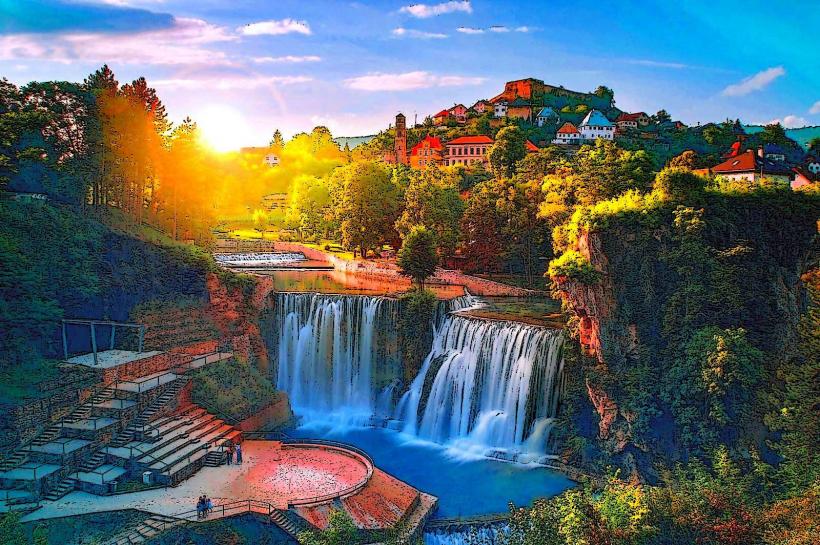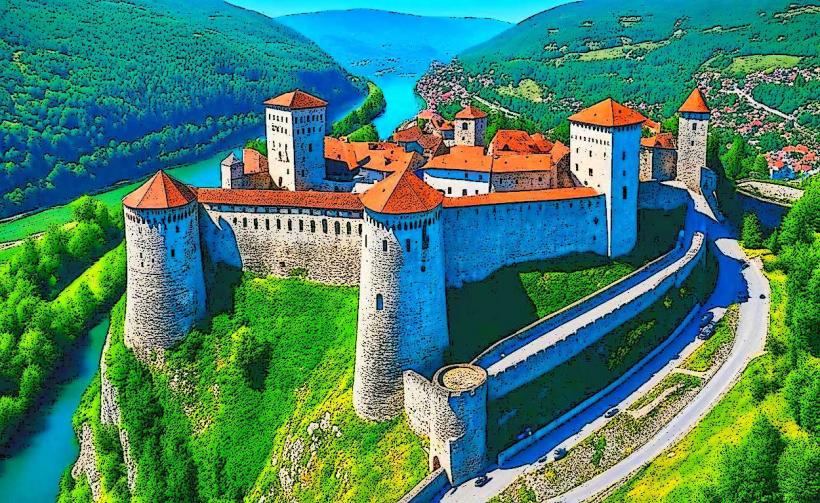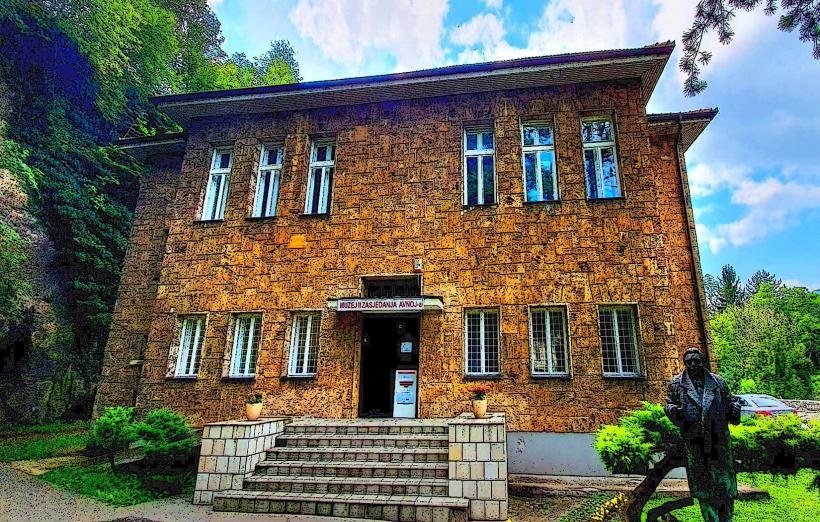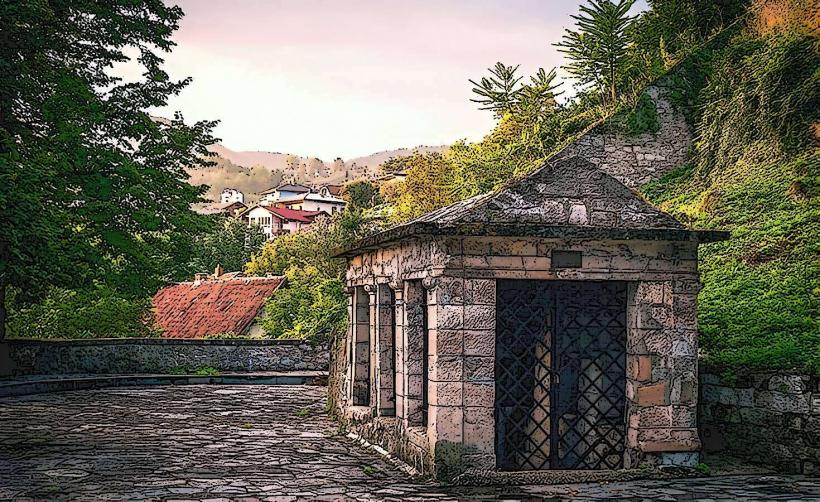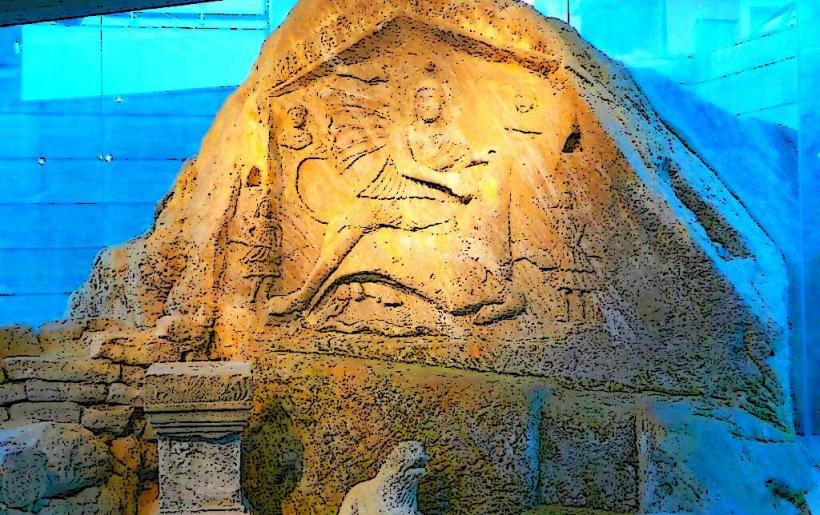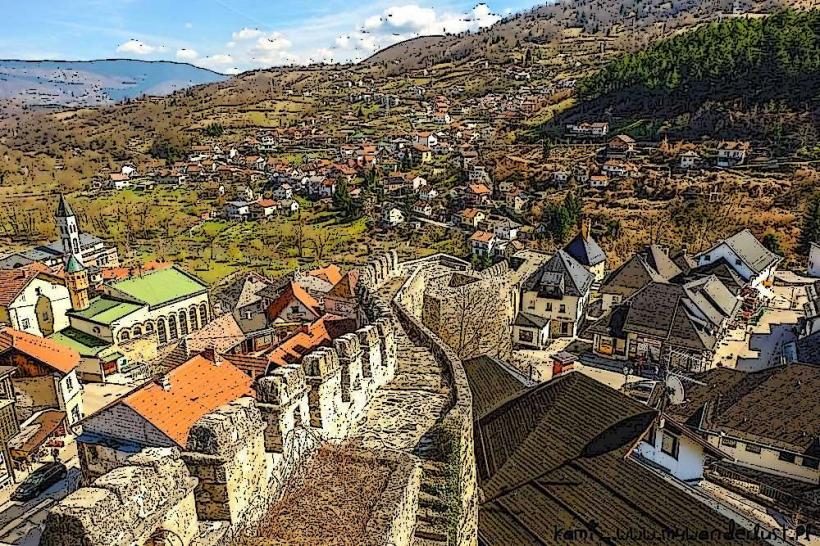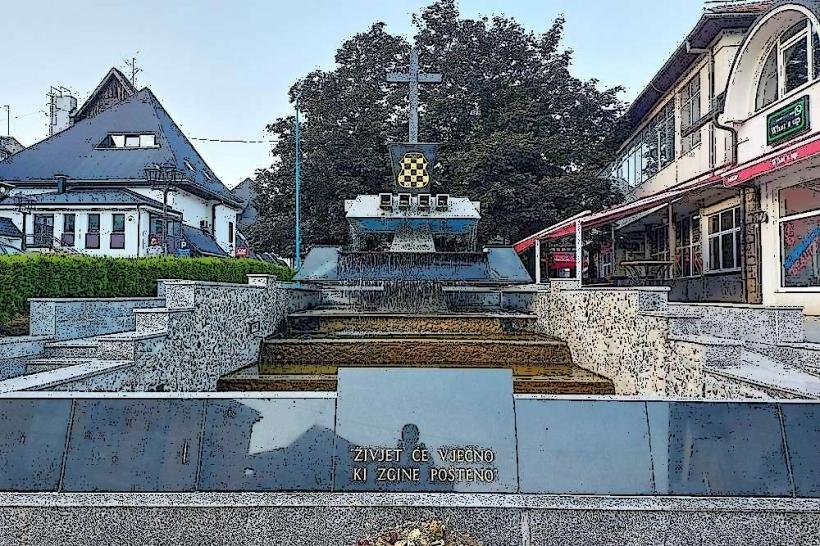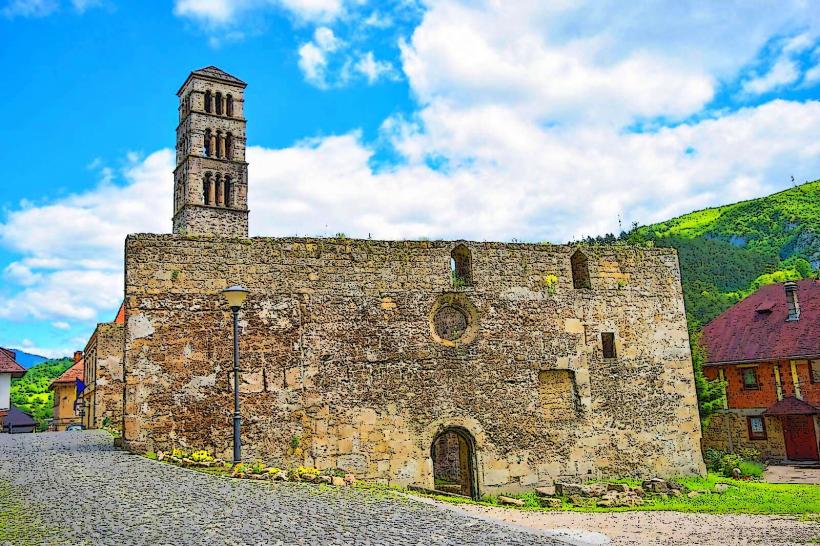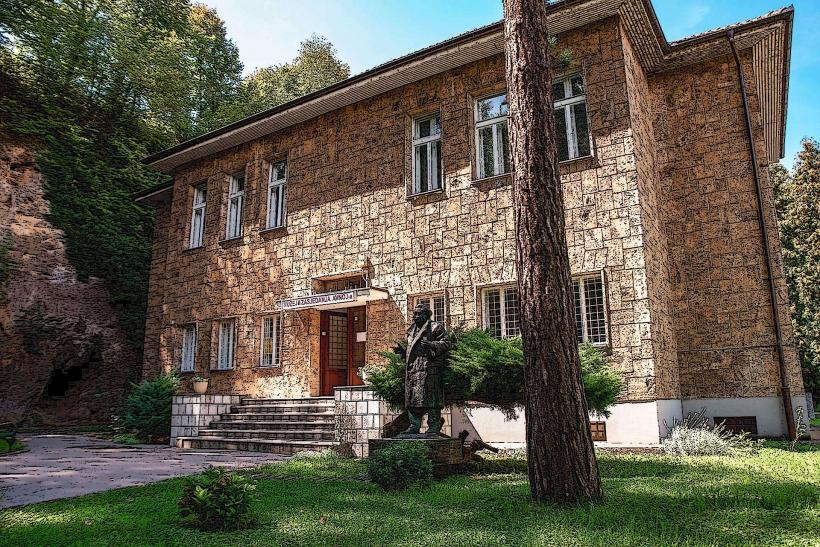Information
Landmark: Jajce MillsCity: Jajce
Country: Bosnia and Herzegovina
Continent: Europe
The Jajce Mills (Mlini Jajce) are an important historical and cultural feature of Jajce, Bosnia and Herzegovina. These mills are water-powered, traditional grain mills that have been an essential part of the town’s economy and daily life for centuries. They represent the historical craftsmanship of the region and offer visitors insight into the traditional methods of milling grain, a practice that has played a crucial role in the development of the local economy and culture.
Key Features of the Jajce Mills
Historical Significance:
- The Jajce Mills have a long history, with their origins dating back to the medieval period when they were used for milling grain, particularly wheat and corn. The mills are believed to have been in operation since the time when Jajce was the capital of the Kingdom of Bosnia in the 14th century.
- The water-powered mills were a vital part of the town’s agricultural economy, as they allowed for the processing of local crops into flour, an essential food source for the population.
Location and Setting:
- The mills are located along the Pliva River near the Jajce Waterfalls, creating a picturesque and historically significant site. The site of the mills is surrounded by natural beauty, with the river providing the necessary power to operate the mills.
- The location by the river made it ideal for water-powered milling, as the flowing water was used to turn the wheel and grind the grain into flour. The presence of the Jajce Waterfall nearby further enhances the mill’s charm, as the cascading water adds to the serene and historic atmosphere of the area.
Water-Powered Milling System:
- The Jajce Mills are examples of water mills, an ancient technology that harnesses the energy of flowing water to turn a wheel, which in turn powers the grinding process. This system has been used for centuries in various parts of the world, and the Jajce Mills provide an opportunity to witness the traditional method of grain milling.
- The mills are equipped with large wooden wheels that are turned by the flow of the Pliva River, which powers the grinding stones that mash the grain. This process was the primary method of grain milling until the advent of more modern machinery.
Role in the Local Economy:
- The Jajce Mills played a crucial role in the local economy, providing essential flour to the population for baking bread and other staple foods. In a region where agriculture was the primary industry, the mills were indispensable for turning harvested crops into consumable goods.
- These mills contributed to the sustainability of the local population, as they allowed people to process their grain without the need for external resources, making the town self-sufficient in terms of food production.
Cultural Heritage:
- The Jajce Mills are considered an important part of the town’s cultural heritage, showcasing traditional engineering and craftsmanship that has been passed down through generations. The preservation of these mills allows visitors to understand the historical roots of the community and how local people lived and worked in centuries past.
- The mills are often viewed as a symbol of the historical significance of Jajce’s agricultural traditions, connecting the past with the present.
Tourism and Visitor Experience:
- Today, the Jajce Mills are a popular tourist attraction, with visitors coming to explore the historic site and learn about the milling process. The mills are often included in guided tours of Jajce, along with other nearby landmarks such as the Jajce Fortress and the Jajce Waterfall.
- Visitors to the mills can observe the water-powered machinery in action, experience the traditional milling process, and gain an appreciation for the ingenuity and hard work of past generations.
Preservation Efforts:
- The Jajce Mills have been preserved as part of the town’s efforts to protect its cultural heritage. Efforts are being made to maintain the traditional milling system and ensure the site remains a historical and educational resource for future generations.
- In addition to their historical value, the mills are also seen as a symbol of local pride and a reminder of the town’s self-sufficiency and resilience throughout its long history.
Educational Value:
- The Jajce Mills provide a unique educational opportunity for visitors to learn about traditional agricultural practices and the history of milling in Bosnia and Herzegovina. The site is particularly educational for those interested in the history of craftsmanship, technology, and local food production.
- School groups and tourists alike can explore the working parts of the mill, see how the water-powered system functions, and gain insight into the importance of local industries in the historical development of the town.
Visiting the Jajce Mills:
- The Jajce Mills are open to the public, with many visitors taking advantage of the scenic location near the river. The peaceful surroundings and historical context make it a perfect place for tourists to relax and enjoy the natural beauty of Jajce while learning about its history.
- In addition to the mills, the area is home to several restaurants and cafes, where visitors can enjoy local Bosnian cuisine and traditional dishes, making it a well-rounded destination for travelers.
Conclusion
The Jajce Mills are a remarkable example of traditional water-powered milling technology, and they stand as a testament to the history and craftsmanship of the town. They provide a unique glimpse into the everyday life of Jajce’s inhabitants throughout the centuries, showcasing the town's reliance on agriculture, local industry, and self-sufficiency. Whether you’re interested in the historical significance, the traditional milling process, or the picturesque setting, the Jajce Mills offer a fascinating and educational experience for all visitors.

